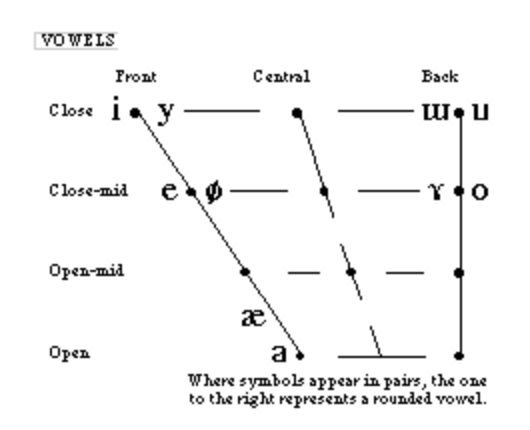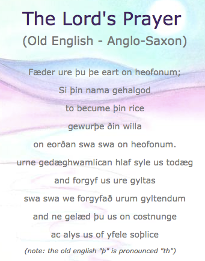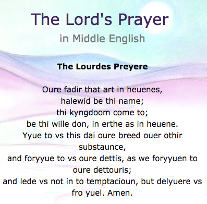Linguistics course - - - - assignment 5 attached
1A) Match the following.
|
| Term | Description |
|
| Syntax | a. “sat” not “sitted” (In other words, words in English adhere to rules that govern the expression of certain grammatical relationships - in this case, verb tense.) |
|
| Phonetics | b. /t/ > [th]/ #____V (Or, said in another way… /t/ is aspirated word-initially in front of vowels) |
|
| Phonology | c. Up with this I will not put unless it is absolutely necessary. (In other words, some dialects of English maintain that it is incorrect to end a sentence with a preposition.( |
|
| Morphology | d. A man is handsome, but a woman is beautiful. (In other words, terms that may have similar meaning may have distinct distributions in the language depending on context.) |
|
| Semantics | e. English has 13 vowel sounds (but only 5 letters). (In other words, as with all languages, there is an inventory of sounds that native speakers will recognize across dialects of that language.) |
1B) Look at the description of the basic first language phonetic inventory and explanation at each link provided. Based on the sounds and explanations in the inventories, choose the word a native speaker of that language would be MOST LIKELY to articulate accurately. Briefly explain why, following the explanation provided in the sample below. Remember, it’s important to compare the phonemic inventory (the list of sounds) as well as look over the notes on distribution (where each sound occurs in context in the language).
Sample:
Spanish Phonemic Inventory
i) shy
ii) date
iii) team
| (i) Spanish has neither the fricative /ʃ/ nor the diphthong /aɪ/. Therefore, “shy,” pronounced [ʃaɪ] in U.S. English dialects, would probably be articulated as [si] by a native Spanish speaker. (ii) The Spanish speaker would have the least trouble with (ii), the word ‘date,’ which is pronounced [deɪt] in U.S. English dialects. Because the Spanish vowels are monophthongs (shorter articulation), whereas many vowels in English dialects have a secondary articulation, there might be some confusion between [det] and [dɛt] in the Spanish speaker’s articulation. However, it would be the least problematic. (iii) The sound /m/ rarely occurs word-finally in Spanish. Therefore, “team” would probably be articulated as [tin] by a native Spanish speaker. |
Korean Phonemic Inventory (focus on consonants in this analysis)
father
pot
shot
Vietnamese Phonemic Inventory (focus on consonants in this analysis)
those
ledge
feet
1C) Include a P(honeme) or an A(llophone) to indicate which concept the description or example illustrates. The first two are completed for you as examples.
| P or A | Description, examples, etc. |
| /p/ vs /b/ in English | |
| /ph/ vs /p/ in English | |
|
| Core sounds in the inventory of a language (abstractions) |
|
| Actual articulations of sounds determined by the environment in which they occur |
|
| A native speaker of Language A (see vowel inventory below) pronounces all /ɪ/ sounds in English as /i/ sounds in all contexts. |
|
| A speaker from Language B pronounces /s/ sounds in English words as [ʃ] in front of the high, tense, front vowel [i] but correctly as [s] in all other contexts. That is, he articulates “she” and “see” identically as [si]. |
Language A

1D) Analyze the following short language samples and identify the key issues in play across morphology, syntax, and semantics. For this section, remember to be precise. Note morphology issues (and be specific), syntax issues, and/or semantic issues.
Sample:
A nonnative speakers says: Mrs. Jones teacher. Her nice. Her funny.
Morphology: The student is using object pronouns where subject pronouns are needed (Her nice… Her funny).
Syntax: The student is omitting the “be” verb needed in each statement, which should be “Mrs. Jones is a teacher. She is nice. She is funny.” Also, the student omits the article “a,” which should be included in the noun phrase “a teacher” in the first sentence.
Semantics: no problems noted
1) A nonnative speaker says: Thomas goed to store yesterday and buyed a flour, a milk, eggs and a bread.
2) A nonnative speaker says: The woman failed the test because he didn’t to study. He needs to review the material and to go to the tutoring center for helping.
3) A nonnative speaker says: He bought she a sweater black, but it is very more bigger for she.
Section 2: English through the Ages…
2A) True/False. Indicate whether each of the following is a true or false statement. If the statement is false, explain why and how it should be changed to render the information true.
______ It is fair to say that although Modern English has a larger vocabulary than Old English, all of the words that existed in Old English have the same meanings they had over 1,000 years ago.
______ Old English relied heavily on morphology to organize phrases and clauses whereas Modern English relies heavily on word order (syntax) to accomplish the same job.
______ Modern English is an improvement over Old English as are standard dialects over non-standard dialects.
______ The sound inventory of Modern English is identical to that of Old English.
______ The differences that emerged over the centuries between Old English and Modern English provide evidence that language changes in response to multiple pressures, including: linguistic, sociocultural, political, and economic.
2B) Using the two examples of The Lord’s Prayer (below), highlight at least two examples of (a) morphological change and (b) syntactic change that are typical of the kinds of changes that happened from OE into the ME period.
|
|
|
Morphological changes
Syntactic changes
Section 3: Language change and development
3A) Language change
A colleague/family member bemoans the unfortunate decline of English in this 21st century of texts and emails and Twitter. Referencing your awareness of the changes through which English has gone over the past 1,000 years, help him/her understand that change is an integral part of language communities and the systems through which they communicate with one another. Include examples that will help him/her understand, as well, that change in language is not limited to the realm of vocabulary but also impacts pronunciation, which – in turn – can impact morphology and syntax.
The response to this item should reflect your own voice and understanding of the breadth and relevance of language change as a language student, user, researcher, and/or teacher.
3B) Language acquisition/development
You hear a young child make the following utterances.
To his mom (holding his arms up): Pick you up? Pick you up!!
To his friend: No you toy! Me toy!
To his puppy: No go. Stay. Stay! No go!
What do these utterances tell you about the child’s age (range) and stage of syntactic development? Which specific features of the language are evidenced in the example utterances, and where would you say the child is, overall, in his/her linguistic development as a native speaker of English? Briefly summarize the key morphological and syntactic forms/functions evidenced herein, and explain why you wouldn’t be worried if (a) the child is two-three years old but would be worried if (b) the child is seven years old.
3C) Additional language acquisition/development
Two students produce the following writing sample to describe the images. Walk me through the issues you notice in each across phonology, morphology, syntax and semantics.
| |
Level 1
She is eatting the ice cream.
She was spriz. She drop hr ice cream.
and She is so sad.
Phonology
Morphology
Syntax
Semantics |
|
Level 2.5
Layla is a girl. She very like to eat ice cream. Today her mambuy a ice cream to Layla.
Layla got a shok. Then the ice cream that she had drop on the floor.
After the ice cream fall down,Layla was not happy. She was crying for her ice cream.
Phonology
Morphology
Syntax
Semantics
|
3D) Pragmatics/Politeness
A student walks into a professor’s office and says “You need to give me an extension on the paper due on Friday.”
The statement is clearly grammatical. What’s the crux of the issue – and what does it suggest about the student’s proficiency in the English language versus his proficiency in the pragmatics of English? Talk about directness in your explanation.
Language contact and variation
4A) Look at the Pidgin (translated into standard English) and point out features that are typical of pidginization in language contact situations. What do you notice about the words in the pidgin and how do you see their relationships to the translated version?
"Sapos yu kaikai planti pinat, bai yu kamap strong olsem phantom." "Fantom, yu pren tru bilong mi. Inap yu ken helpim mi nau?" "Fantom, em i go we?"
Translation:
“If you eat plenty of peanuts, you will come up strong like the phantom.' 'Phantom, you are a true friend of mine. Are you able to help me now?' Phantom, Where did he go?'





